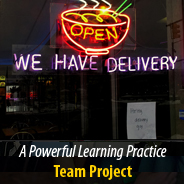Lancaster Mennonite School – Kraybill Campus
Team Members: Val Garton, Keri Hurst, Gena Fisher, Heidi Steffen
Community: IU-13 Year 1, 2010-2011
Our project is focused on Professional Development. Through observation, interviews, and a survey, we found that most teachers were not having students use emerging technologies. We realized several barriers to learning and using these technologies and how teachers felt they would best be able to integrate technology in their lessons. To overcome these barriers and get teachers excited about using emerging technologies, our system would need to change the way technology professional development sessions are done. In our project, we tried running tech PD sessions the way the teachers said would be more effective. We are proposing that our school continue to do them this way throughout the year. As part of the new focus on tech PD we have created a shared google doc of workshop topics and a wiki of technology resources for teachers. We continue to meet with our curriculum director and asst. superintendent to process and implement and evaluate these changes.
We had an idea that teachers were not using the “newer” technologies, even though it seemed like they weren’t necessarily opposed to using technology. We took a survey to verify what we had observed. In the survey, we also asked teachers what they felt were the barriers that kept them from using technology and what they felt would help them use it more. The survey showed “not enough time” and “lack of ideas” as the top barriers. From the survey comments, we concluded that we needed to provide workshops during already scheduled staff development, do it in small chunks, make it purposeful – giving examples from within the context of the curriculum, do several sessions on the same topic, provide time to “play”, do it by department and grade level, have teachers teach each other. We asked our administrators for chances to try out our ideas during staff development sessions throughout the year. We were thrilled with the positive responses of the teachers and the progress they were making. We have been meeting with administration and plan to provide these types of tech staff development sessions often throughout the year. It is our hope that as teachers teach each other in these sessions and have time to work with the tools and share ideas, that a new excitement will emerge for using technology and this type of interaction will become a regular part of all staffdevelopment times.
Latest posts by Powerful Learning Practice (see all)
- Hurry, you do not want to miss out on this… - November 3, 2020
- Resist the Urge to Quit Prematurely - October 26, 2020
- Let’s Move Past Feeling Disconnected from Your Students. Words Matter - October 24, 2020

